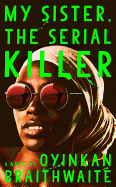
| Publisher: | Doubleday | |
| Genre: | Women, Family Life, General, Satire, Fiction | |
| ISBN: | 9780385544238 | |
| Pub Date: | November 2018 | |
| Price: | $22.95 |
| Starred | Fiction |
by Oyinkan Braithwaite
My Sister, the Serial Killer is a short, sharp debut novel from Nigerian writer Oyinkan Braithwaite, a 2016 Commonwealth Short Story Prize finalist for "The Driver." It follows a nurse who would get along better with her sister if the young woman would stop committing murder.
Korede and Ayoola have little in common. Elder sister Korede is plain, diligent and devoted to Ayoola, who is beautiful, vapid and devoid of empathy. In the opening scene, Korede receives a call for help from her sister, who has stabbed her boyfriend to death, allegedly in self-defense. As this incident marks the third time one of Ayoola's boyfriends has wound up dead after supposedly assaulting her, Korede finds herself less inclined to believe her sister. Nonetheless, she rushes to clean up the scene and dispose of the corpse, as usual.
Beauty is a beast in this sly, absurd take on the black widow trope. Braithwaite's greatest trick lies in keeping the sisterly relationship believable, with Korede constantly scoffing in disbelief at Ayoola's shallowness and lack of common sense, yet always rushing in to tidy her sister's messes.
While the serial killer plot device suggests the horror genre, My Sister, the Serial Killer has frequent overtones of dark comedy brought on by Ayoola's naïveté and lack of remorse as Korede wonders, "Isn't there an option where no one dies and Ayoola doesn't have to be incarcerated?" This short chiller comes with a surprising bite and a reminder never to underestimate a pretty face--or a plain one. --Jaclyn Fulwood, blogger at Infinite Reads

| Publisher: | Flatiron | |
| Genre: | Women, Family Life, Domestic, General, Thrillers, Fiction | |
| ISBN: | 9781250069825 | |
| Pub Date: | November 2018 | |
| Price: | $28.99 |
| Fiction |
by Liane Moriarty
Tranquillum House is a health resort offering a transformative experience to people seeking a balm for ailments both mental and physical. It's where Liane Moriarty brings together nine perfect strangers for a 10-day retreat. One is Frances, a bestselling romance author reeling from a nasty review and a rejection of her latest manuscript, and her back is acting up. Being a writer, she's naturally curious about the other guests: Why is the entire Marconi family there, when they all seem so healthy? What's the deal with Tony, who looks like a serial killer? Ben and Jessica are young and rich, arriving in a Lamborghini, so what's their problem?
Strangers isn't only about Tranquillum House's clients; the story is also told from the points of view of the staff. Masha is the founder and seems impossibly perfect. Yao is a former paramedic who became a true believer of all things Tranquillum, and Delilah reserves judgment about her employer's "healing" methods.
This novel is less of a mystery than Moriarty's previous books (Big Little Lies; The Husband's Secret). It delves into the emotional state of each character, at times exposing painful truths. It moves at a leisurely pace, perhaps befitting the atmosphere at the retreat, and has a bizarre twist in the third act. But Moriarty's turns of phrase remain as sharp as ever: "Her eyes looked like they'd been borrowed from someone beautiful," and "his moustache had been perfectly preserved from 1975." Everyone comes to Tranquillum looking for transformation and Moriarty gives it to them--in unexpected ways. --Elyse Dinh-McCrillis, blogger at Pop Culture Nerd
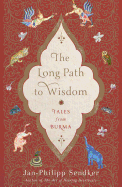
| Publisher: | Other Press | |
| Genre: | Folklore & Mythology, General, Literary Collections, Asian, Social Science | |
| ISBN: | 9781590519646 | |
| Pub Date: | October 2018 | |
| Price: | $16.95 |
| Fiction |
by Jan-Philipp Sendker
In the preface to his enchanting compilation of Burmese fairytales, legends and myths, Jan-Philipp Sendker explains that he encountered many of these narratives through various trips to Myanmar while researching his novels The Art of Hearing Heartbeats and A Well-Tempered Heart. The stories "exposed the rich mythologies of the various ethnicities of Burma, the spirituality of its people, and the impact of centuries of Buddhist thought."
The Long Path to Wisdom is filled with magic and royalty, nature and reincarnation. The tales tend to be short but dense with meaning and moral. Lessons are learned, wrongs are righted and good triumphs. There's plenty to chew on, chuckle at and savor. They also reflect universal themes, bearing similarities to stories from other cultures. "The White Crow and Love" may remind some readers of Hans Christian Andersen's The Little Mermaid. Some tales, like "The Story of Father and His Son," provide mythological explanations for nature. A couple's only son has extraordinary strength, and when he dies, his father advises him to give that strength to the wind and the water. Readers can learn lessons from clever animals such as crocodiles, tigers and monkeys in much the same way as Aesop's fables.
Young and old alike will enjoy traveling through the forests, farms, kingdoms and villages of Burma. The rich landscape is as captivating as the mystical nats (or spirits) that inhabit the pages of this book. Simple writing with complex meaning and rich culture, The Long Path to Wisdom is a great addition to any fairytale collection. --Jen Forbus, freelancer
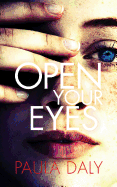
| Publisher: | Grove Press | |
| Genre: | General, Thrillers, Fiction | |
| ISBN: | 9780802128454 | |
| Pub Date: | October 2018 | |
| Price: | $26 |
| Mystery & Thriller |
by Paula Daly
When Jane Campbell's sixth novel in a row is rejected, she feels she's wasted yet another year of her life. Her husband doesn't understand why it hits her so hard; then again, Leon is the well-known author of a gritty crime series and winner of a Gold Dagger Award. Due to Leon's success, the couple and their two young children live in a tony Liverpool Victorian.
One afternoon, with the family in the car headed to a birthday dinner, Leon is angrily confronted by a neighbor about the misbehavior of the Campbell cat, another in a series of perceived transgressions that has soured relations on their quiet street. Jane retreats into the house momentarily to escape the argument and returns to the car to discover Leon incapacitated and unresponsive.
With Leon gravely injured, their future uncertain and suspicion beginning to swirl around Jane, she's forced to poke around in Leon's computer for answers. Jane's digging brings more uncertainty and danger to the forefront, leading her to believe something more serious than an aggrieved fellow author or uptight neighbor might be lurking in their lives.
Open Your Eyes is Paula Daly's (Keep Your Friends Close) fifth work of psychological suspense, and she entertainingly weaves elements of the publishing industry, seedy and reputable alike, into her trademark domestic-driven drama. Daly's characters acknowledge the plot is akin to "something Hollywood cooked up for the purposes of dramatic storytelling." Fun and fast-paced, Daly has prepared a menu fit to pack into one sitting. --Lauren O'Brien of Malcolm Avenue Review

| Publisher: | Minotaur | |
| Genre: | Police Procedural, International Mystery & Crime, Mystery & Detective, Fiction | |
| ISBN: | 9781250067869 | |
| Pub Date: | November 2018 | |
| Price: | $27.99 |
| Mystery & Thriller |
by Keigo Higashino, trans. by Giles Murray
A woman is found strangled in her Tokyo apartment, but everyone who knew her swears she had no enemies. Police detective Kyoichiro Kaga retraces the victim's steps in her final hours and interviews everyone who had any contact with her, however brief. Witnesses and possible suspects include an insurance agent, the victim's ex-husband, the co-owner of a restaurant, an accountant, a clerk at a pastry store and the owner of a clock shop. Several of them seem to be concealing information, purposely misleading or outright lying. But nothing evades the detective's keen intelligence and watchful eye as he tracks down the truth.
Though murder is no laughing matter, Kaga remains a delightful character in Keigo Hagashino's Newcomer, the second book in the Kaga series after Malice. He's the Japanese Columbo, sloppily dressed and unintimidating--until he hits interviewees with just one more question that makes them squirm.
The author offers amusing descriptions: for example, a young girl spots police detectives and thinks: "If she had to classify them, she'd have to go with 'geezer.' " Newcomer's structure calls to mind a Robert Altman movie, each chapter spotlighting a different set of characters in a story that can stand alone; intertwined, they present a complete picture that provides the solution to the case. And Kaga isn't after only the murderer. He solves smaller mysteries to bring closure touchingly to those on the tangents of the case, because "[f]inding ways to comfort them is part of my job." Fans of classic whodunits should introduce themselves to this newcomer immediately. --Elyse Dinh-McCrillis, blogger at Pop Culture Nerd

| Publisher: | Penguin Press | |
| Genre: | Biography & Autobiography, Biography & Memoir, Nonfiction, General, Social Activists, History, Comics & Graphic Novels, Latin America | |
| ISBN: | 9780735221772 | |
| Pub Date: | November 2018 | |
| Price: | $35 |
| Graphic Books |
by Jon Lee Anderson, illust. by José Hernández
Argentine revolutionary Ernesto "Che" Guevara was a man both revered and reviled, whose legendary feats have since fueled the imagination and attracted many admirers. Che: A Revolutionary Life, José Hernández's graphic adaptation of Jon Lee Anderson's 1997 biography, shows Che in light of these stories and myths. Hernández paints a portrait of Che as an idealistic leader whose dogmatic faith in socialism created a flawed vision of class warfare, put Fidel Castro in power and led to Che's own tragic downfall.
Letters, journals, interviews and personal writings show how a young medical doctor transformed into one of the most charismatic and feared leaders of the 20th century. Che's writings provide the evolutionary context behind his all-or-nothing, win-or-lose philosophy that left little room for diplomacy. The snippets of dialogue that Hernández chooses to connect panels feel disconnected and jumpy, but the artwork stuns with cinematic precision and photographic detail. This book puts readers in the thick of the South American and Caribbean jungles, where the Cuban revolution was won. Scenes of bullets whizzing by Che and his guerilla fighters provide tension and immediacy, while close-ups that focus on the speakers and blur background details lend the narrative a documentary feel. Anderson and Hernández depict a proud and flawed leader who inspired the disenfranchised and whose exploits and early death added to his mythology. --Nancy Powell, freelance writer and technical consultant
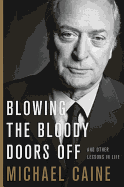
| Publisher: | Hachette Books | |
| Genre: | Biography & Autobiography, General, Entertainment & Performing Arts, Acting & Auditioning, Performing Arts | |
| ISBN: | 9780316451192 | |
| Pub Date: | October 2018 | |
| Price: | $28 |
| Biography & Memoir |
by Michael Caine
At age 85, Oscar-winning actor Michael Caine follows up two memoirs (1992's What's It All About? and 2010's The Elephant to Hollywood) with this chatty, charming and bracingly candid collection of "the lessons I've learnt and want to share, not just for aspiring movie actors but for everyone." A born raconteur, Caine's anecdotes about his seven decades making films are perceptive, witty and wildly entertaining.
"Talent will get you only so far," writes Caine, offering salient advice that's applicable to any career aspirations. "You need to add in boring old reliability if you want to endure." He also advises, "Find something you want to do and learn how to do it really well.... We can't all be famous actors. But if you can find something you love, and if that something will also pay the bills, you will be on your way to your own personal paradise."
Caine gleans valuable lessons from working with the best (notably directors Christopher Nolan and John Huston). But he also advises readers to "use the difficulty"--whether it's working dead-end jobs, getting negative feedback or working with bullies--and find something positive within the problem. Amid the excellent advice, Caine offers star-studded anecdotes about the realities of being a working actor and life on and off the sets. (He missed picking up his Oscar for Hannah and Her Sisters because he was filming Jaws: The Revenge, a bad film he made so he could buy his mother a home.) This solidly entertaining memoir doesn't have a single dull page. --Kevin Howell, independent reviewer and marketing consultant
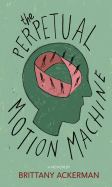
| Publisher: | Red Hen Press | |
| Genre: | Biography & Autobiography, Women, Women Authors, Personal Memoirs, Literary Collections, Essays | |
| ISBN: | 9781597096911 | |
| Pub Date: | November 2018 | |
| Price: | $15.95 |
| Biography & Memoir |
by Brittany Ackerman
As a child, Brittany Ackerman looked up to her brilliant older brother, Skyler. She coveted his Lego buildings and played video games in his bedroom. Later, they both struggled with drug use and suicidal thoughts. In her slim memoir-in-essays, The Perpetual Motion Machine, Ackerman tries to make sense of him and her own past.
Ackerman shares simple memories from her youth--babysitters, tantrums, trips to Disney World. There's an underpinning of sadness through each vignette, the anxiety and uncertainty of childhood which, in some ways, never fully goes away. Ackerman wants to be grown before she is, and she skillfully describes the desire to emulate a sibling and the fragility of a happy family. After Skyler gets drunk on a family vacation, she writes, "I don't know if there will ever be calm again. My brother is growing up and I'm not, or maybe I am, maybe finding calm in the storm is what growing up is, and if so I've found it here in the lobby at dawn."
Ackerman writes that her brother remembers these moments differently than she does, and her memoir shows how simultaneously close and far you can be from the people you love. The book doesn't tie up loose ends, and readers may be left wondering about Ackerman and her brother's current lives. Though perhaps there's truth in the lingering questions of these family relationships. Is it possible truly to know one's siblings, or oneself? --Katy Hershberger, freelance writer and bookseller
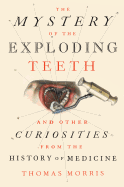
| Publisher: | Dutton | |
| Genre: | Form, Reference, Medical, History, Curiosities & Wonders, Humor, Essays | |
| ISBN: | 9781524743680 | |
| Pub Date: | November 2018 | |
| Price: | $26 |
| Health & Medicine |
by Thomas Morris
In the modern world, if someone were suddenly to fall ill and collapse, response and diagnosis would most likely be swift; the person would be whisked away in an ambulance and treated at a hospital. A few hundred years ago, however, one may instead have received a tobacco enema or, in the case of an English earl from the early 1700s, had the bowels of a sheep laid upon his body. He did not survive.
In The Mystery of the Exploding Teeth, historian Thomas Morris (The Matter of the Heart) scours hundreds of years of medical journals for a wonderfully gruesome tour of inexplicable illnesses, questionable remedies, jaw-dropping operations and recoveries that defy logic. One boy accidently got the throat of a goose stuck in his larynx. While explaining how the kid survived a rudimentary tracheotomy, Morris explains with deadpan humor that "honking" using a goose throat was "an odd pastime, but it's better than selling drugs or robbing little old ladies, I suppose." He also covers a woman who glowed in the dark, a man whose belches were inflammable and several unfortunate souls who survived unbearable surgeries before anesthesia. And there's no shortage of curious individuals who ingested (often accidentally) or inserted (always intentionally) objects of all sorts in various orifices.
Occasionally, the stories reveal a primitive understanding of medicine. From a 1637 autopsy, the description of a deceased patient's right heart ventricle as "wrinkled like a leather purse without money" accurately describes signs of heart disease. The Mystery of the Exploding Teeth is a fascinating window into the world of medical oddities. --Frank Brasile, librarian
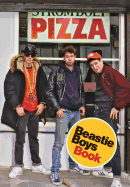
| Publisher: | Spiegel & Grau | |
| Genre: | Biography & Autobiography, Music, Rap & Hip Hop, Genres & Styles, General, Entertainment & Performing Arts | |
| ISBN: | 9780812995541 | |
| Pub Date: | October 2018 | |
| Price: | $50 |
| Starred | Performing Arts |
by Adam Horovitz, Michael Diamond
"Dear Mr. Yauch, I have received several complaints that there are items falling out of your window and hitting people on the sidewalk."
So begins a memo sent to Adam "MCA" Yauch from a Hollywood hotel, included in Beastie Boys Book. In the spirit of Yauch, the book throws tradition out the window. Here, Michael "Mike D" Diamond and Adam "AD-ROCK" Horovitz construct a monster compendium more akin to a work of art than a memoir: colorful essays penned by Diamond and Horovitz, heaps of photos, illustrations, lyrics, a graphic novel, playlists upon playlists and much more.
Diamond and Horovitz trace their arrival on the New York City hardcore scene via bands like Bad Brains and Black Flag, then their unlikely entrance to the national stage: a tour opening for Madonna. Celebrity guests make memorable contributions, including Spike Jonze's "15 Pictures," Amy Poehler's Beastie Boys video review and chef Roy Choi's mini cookbook within the book.
Humor and humility suffuse the collection. Running warmly throughout is a thread honoring Adam Yauch, who died in 2012, "the 'Fight for Your Right to Party' guy who went trekking through Nepal on a discovery quest." Or who spontaneously took AD-ROCK's mom on a ride around New York City in his new sports car. Or who would play the long game with pranks, once waiting 15 years for a payoff. Beastie Boys Book is a fitting tribute to Yauch and to a band that even after decades still looms larger than life. --Katie Weed, freelance writer and reviewer
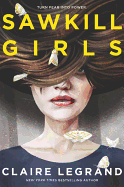
| Publisher: | Katherine Tegen/HarperCollins | |
| Genre: | Friendship, Horror, Fantasy, General, Social Themes, Young Adult Fiction | |
| ISBN: | 9780062696601 | |
| Pub Date: | October 2018 | |
| Price: | $17.99 |
| Starred | Children's & Young Adult |
by Claire Legrand
There is a legend on the island of Sawkill Rock about a beast that steals girls. He even has his own rhyme: "Beware of the woods and the dark, dank deep. He'll follow you home and won't let you sleep."
Sixteen-year-old Marion; her older sister, Charlotte; and their mother, Pamela, move to Sawkill for a "change of scenery" after their father and husband's death. Pamela finds work as a housekeeper for the Mortimers, a "matriarchal dynasty" who "keep their mother's surname, generation after generation." But sturdy, reliable Marion doesn't like the feel of the island nor of the Mortimers--she fears flighty Charlotte will become dangerously enamored with the beautiful, "damaged" 17-year-old Val Mortimer.
Zoey doesn't trust Val, either. Seven months ago, her best friend Thora became one of Sawkill's missing girls. Right before she vanished, Thora suddenly became close friends with Val. Zoey is convinced Val had something to do with Thora's disappearance; that Val might have something to do with Sawkill's years--"Decades, even"--of missing girls. She's not wrong. Val, just like every woman in her family back to her "great-great-great-grandmother," is bound to a bloodthirsty "beast from a hidden land" who rules her "life, [her] every breath, [her] every choice" and demands sacrifice. When Charlotte, who met and immediately connected with Val, disappears, terrified Marion pairs up with Zoey to figure out what happened.
Add to this plot a sentient island, a centuries-old fraternal order, bone-deep feminism and coming-of-age story arcs to get Claire Legrand's (Furyborn) remarkable Sawkill Girls. Legrand accomplishes the kind of slow-building tension and mounting horror that will give readers night terrors. Read this book, then lock it in the freezer. --Siân Gaetano, children's and YA editor, Shelf Awareness
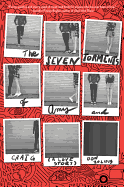
| Publisher: | Disney-Hyperion | |
| Genre: | Humorous, Romance, General, Loners & Outcasts, Young Adult Fiction | |
| ISBN: | 9781368009614 | |
| Pub Date: | October 2018 | |
| Price: | $17.99 |
| Children's & Young Adult |
by Don Zolidis
Breaking up is hard to do. And do. And do. For Craig and Amy, their senior year of high school in mid-1990s suburban Wisconsin is a harrowing series of breakups and reunions. Craig admits from the start that he has "no business being with this girl" due to his innate "nerdishness" and the fact that she is "beautiful and perfect and ha[s] eyes like moonbeams or whatever." Be that as it may, this "superhot" girl who is "president of everything" falls for him. But she also keeps breaking up with him. In what may be one of the best variations ever on it's not you, it's me, she tells Craig (in breakup number five), "You didn't do anything wrong! We do things wrong together."
Craig's wry, self-absorbed and self-deprecating voice carries this slice-of-life love story to a higher plane. Readers, like Amy, will fall in love with him even as they want to shake him. When Amy communicates her fears and hopes, Craig can't help focusing on his own response: wondering if it's deep enough, plotting out witty and brilliant monologues and generally being too nervous to be in the moment with his girlfriend.
Playwright Don Zolidis's debut young adult novel is, not surprisingly, packed with fantastic dialogue and vivid staging. The Dungeons & Dragons scenes are particularly wonderful, with Craig and his friends geeking out over multifaceted dice and "thirteenth-level dwarven paladin[s]." A backdrop of family troubles (parental expectations, sibling rivalry, financial crises, health issues...) and concerns about life after high school flesh out the love story, making The Seven Torments of Amy and Craig a thoroughly absorbing, authentic and entertaining read. --Emilie Coulter, freelance writer and editor
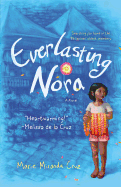
| Publisher: | Starscape/Macmillan | |
| Genre: | People & Places, Asia, Parents, Homelessness & Poverty, Family, Social Themes, Self-Esteem & Self-Reliance, Juvenile Fiction | |
| ISBN: | 9780765394590 | |
| Pub Date: | October 2018 | |
| Price: | $16.99 |
| Children's & Young Adult |
by Marie Miranda Cruz
Twelve-year-old Nora and her mother, Lorna, live in the largest cemetery in Manila, alongside many other people who may have once lived in conventional homes. A fire swept through Nora's home, killing her father, and when the financial difficulties became insurmountable, Nora and her mother were forced to move in with her father's remains in the family's grave house. "A home does not have dead people inside it," Nora thinks of this housing situation. Impoverished, Nora tries to make money by selling wreaths of "everlasting daisies" to cemetery visitors--providing Marie Miranda Cruz's title, Everlasting Nora.
Nora no longer attends school (though there is a makeshift "pushcart classroom" in the cemetery). Instead, she helps her mother do laundry to earn enough for food and basic necessities. Resilient, strong Nora is mature enough to realize that her mother's gambling problem has gotten the better of her--but she doesn't know that Lorna borrowed money from a neighborhood loan shark who employs a vicious enforcer. When Lorna disappears, Nora and her friend Jojo work together to find her. Others help: Jojo's grandmother and other cemetery neighbors and friends join the search, demonstrating people's basic humanity, even in the face of extreme need.
Debut author Cruz is a writer and scientist who uses her own Filipino background to infuse this book with authentic texture, such as Tagalog words (with an excellent glossary in back) and food described in great detail. Despite the violence that endangers Nora's life, her friendships, hopes and, most of all, her love for her mother, ensure that her future will be happier. --Melinda Greenblatt, freelance book reviewer